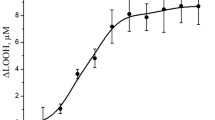Abstract
The subcellular distribution of either [14C] or [3H]3′-methylcholanthrene was studied in rat liver following a single intraperitoneal injection of the labelled hydrocarbon 10 hours previously.
Adsorbed or non-covalently bound methylcholanthrene and its metabolic derivatives occurred in all cell fractions studied with the exception of purified cell walls. The highest specific activities (d.p.m./mg. protein) were found in washed mitochondria, microsomes and ribosome-free microsomal membranes.
Covalent binding of methylcholanthrene and its metabolic derivatives to different cell fractions of rat liver occurs to a small extent and is considered not to be significant. The highest degree of binding occurs in washed mitochondria, microsomes, ribosome-free microsomal membranes and their constituent core proteins.
Cell sap which contains non-covalently bound 3′-methylcholanthrene was fractionated into pH 5 enzyme and pH 5 supernatant fractions. The pH 5 enzyme fraction which possesses a high specific activity (d.p.m./mg. protein) was further fractionated with ammonium sulphate into three fractions. The 0-30% ammonium sulphate fraction had the highest specific activity.
Similar content being viewed by others
Rights and permissions
About this article
Cite this article
Jones, P., Hawtrey, A. Studies on the Binding and Distribution of Radioactively Labelled 3′-Methylcholanthrene in Subcellular Fractions of Rat Liver. Br J Cancer 25, 845–852 (1971). https://doi.org/10.1038/bjc.1971.98
Issue Date:
DOI: https://doi.org/10.1038/bjc.1971.98
- Springer Nature Limited




